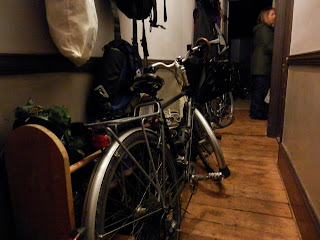
After reviewing “I Am Anonymous,” the recent album from progressive supergroup Headspace, ThisIsNotAScene’s John Toolan put some questions to Adam Wakeman. They talked about the albums themes, influences, the concept and artwork behind the album and much, much more…
Due to the pedigree of the musicians involved in Headspace, is it a concern that there may be preconceptions regarding the content of the album and its’ themes?
I don’t really think so. I think people know what the band is about and will certainly read reviews and interviews before they buy it. People may be surprised that it’s as heavy at is is but when you see 15 minutes songs on the track listing I don’t think people will be expecting an album of piano ballads…
I described the music as “indulgent” in my review, but only in the sense that true artistry, it could be argued, is, by its very nature, indulgent. Do you think this is a fair assessment?
Absolutely. We all think or Headspace as our artistic outlet. Its important to have somewhere to let out your artistic emotions. You rarely get to do that playing for other people and performing their music, so this is that outlet for us.
As for being indulgent, we made this album entirely the way we wanted to make it – with no outside influence financial or otherwise. We signed the deal once all the artwork and music was completed. That was the only way we could truly make the album we wanted to. So in short, ‘indulgent’ is fine with us.
Rather than be ashamed of embracing your influences, you appear to blend a variety of musical styles into your work. Again, with such an experienced group of musicians, is it difficult to remain focussed on what the Headspace venture itself is about?
I think the musical diversity helps the writing process, certainly with Progressive Rock music. We have all played with some great artists in many different genres of music. The more experience you have in different fields can only help the end result.
I understand the album concerns itself with Kubler Ross’ Five Stages of Grief, what was the impetus around that notion?
The title of the album has the finger pointed directly at the listener. This is about you and your relationship with humanity, ultimately the battles fought within the mind from child to man. Through Kubler Ross’ model of impending death, with reference to war, the turmoil leads us to peace and acceptance… only then to swing straight back round to chaos. Current events that affect us all are obvious reference points so War , Religion and Man’s inhumanity to Man are present throughout.
Which comes first with a collection of songs such as this, the concept or the music?
The concept came first from Damian, and Pete and I worked on some of the music. Damian had a few acoustic sections too which we weaved into the fabric of a couple of songs.
As we developed songs and sections of songs, we’d email them to Damian who would come up with melodies and lyrics, and Lee and Rich would start working on writing their parts.
We demo’d the whole album first before starting again and re recording it properly.
It would look as if that a lot of care and attention has gone into the lyrical content of the album. How important were the lyrics to “I Am Anonymous”?
With an album that’s conceptual, the lyrics are really important. Damian is very conscious about the themes and lyrical message, as we all are but as far as the album is concerned Damian was in charge of that department.
You have probably been asked about the artwork many times, but in an age where digital downloads are becoming more prevalent, how important is the cover art nowadays to the character of the album?
I think it’s really important to have an album that is tied in with the visuals on the cover and booklet. There will always be people buying the album online, but we wanted to make sure that the people that buy the CD get a great package.
Pete and I worked on lots of ideas along with the designers to make sure we were truly happy with the way the album looked.
We called the label the day before the artwork was due and said we weren’t 100% with what we had and wanted to develop another idea that Blacklake had shown us. To us it didn’t matter how long it took, as long as it was right. There’s no point having a fantastic picture of an exploding toaster just because it’s a great picture, if it’s got bugger all to do with the music.
Are there any significant problems inherent in taking such a long time to produce an album, as I understand this one took around four years?
This band started with the intention of being able to do something for ourselves, in the time we have. That’s why this album took such a long time. We didn’t have the time restrictions of label deadlines and with each of our schedules we had to fit in the writing and recording as and when we could.
2007/8 and 2010/11 was really busy for me with Ozzy but what that did mean was that we could spend a lot of time getting used to sections of songs and changing bits we didn’t like. Sure there were times when I wondered if we’d ever finish it, but deep down I knew we’d get there when the time was right....
Read the full interview at This Is Not A Scene

















